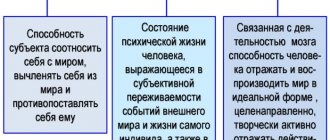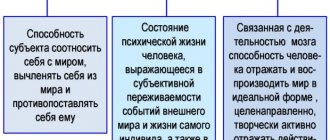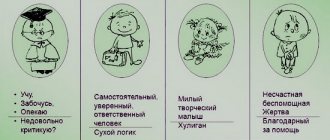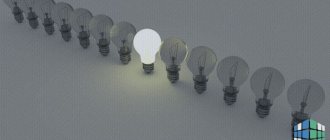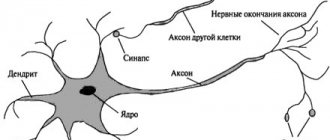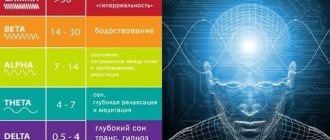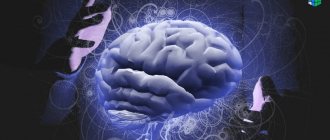Twilight disorder is a sudden and short-term loss of clarity of consciousness.
During this period, a person completely detaches himself from everything that surrounds him, or perceives the world distortedly. In the twilight state, habitual automatic actions are preserved, but delusions and hallucinations may appear, causing fear, melancholy, aggressive behavior, and rage. The attack passes as unexpectedly as it began. The individual has no memories of him, but sometimes they are fragmentary.
The twilight state of consciousness can last several minutes, days, and sometimes longer. It necessarily requires serious treatment by psychiatrists, since it poses a danger to both the person suffering from it and the people around him. Therefore, in the event of an attack, immediate hospitalization is necessary.
Causes and types
The causes of pathology are divided into two groups:
- organic - epilepsy, epileptiform syndrome, brain diseases, including tumors, damage to the medial temporal regions as a result of traumatic brain injury and a number of other conditions;
- functional - hysterical psychoses and narrowing of consciousness, affective states, unexpected situations with consequences in the form of severe psychological trauma.
There are twilight psychotic and non-psychotic disorders. The first include the following types, which have characteristic manifestations:
- Dysphoric twilight state of consciousness. A person acts in an orderly manner, he is self-absorbed, detached from the outside world, sad, does not respond to someone addressing him, or utters some stereotypical words that are not related to what the interlocutor is saying. The face is gloomy, even angry. Such patients can recognize familiar people and situations, but act inappropriately and are unable to critically evaluate what they are doing. Fleeting sensations of having a double, birth and death, etc. may arise.
- Delusional twilight disorder of consciousness. Delusional ideas are formed, and the patient’s behavior corresponds to their content. It seems to him that someone is pursuing him, wants to harm him, make him suffer, kill him. He is focused, behaves in an orderly manner, but normal communication with him is impossible. The patient’s actions are aimed at protecting against an imaginary threat dictated by delusion, most often antisocial. When the condition returns to normal, memories of the experience remain.
- Hallucinatory disorder is characterized by the presence of illusions and frightening visual and auditory hallucinations. Communication is impossible, since such a patient does not perceive reality and the appeal to him at all. He hums, pronounces or shouts individual words or phrases, most often inarticulate. As a reaction to terrible visions, aggression arises, the outbreaks of which result in very harsh actions performed with enormous force - beating, killing with bare hands or with the help of sharp objects.
A number of psychiatrists identify another type of psychotic twilight state of consciousness - oneiric. It is characterized by colorful fantastic or fairy-tale hallucinations, accompanied by catatonia - impaired motor functions, i.e. excitement or stupor.
Non-psychotic cloudings of consciousness include:
- Somniloquy - talking in your sleep.
- Somnambulism - sleepwalking, sleepwalking. Occurs in children and adolescents.
- Trances are long-term automatic actions. Most often, the patient leaves for another city.
- Outpatient automatisms are brief automatic actions. For example: a person leaves home, gets on public transport, and, upon waking up, finds himself incomprehensibly how and why in an unfamiliar place. The patient looks confused, thoughtful, there are no hallucinations or delusions. He does not remember at all what happened to him in a state of darkness.
- Genser's syndrome is a hysterical variant that occurs as a result of prolonged stress. The impetus for the development of the disorder is some kind of traumatic event, an unexpected exposure to unsafe, unusual conditions. The patient can only talk about these events, but he is not alienated from the world. The individual behaves like a clown, “falls into childhood” - he lisps, grimaces, and obviously answers simple questions absurdly. Knowing the purpose of things, he distorts their use, for example, he tries to pull gloves on his feet. Emotions suddenly change to the opposite. After an attack, the patient has fragmentary memories of what happened, which are restored after a good sleep.
The twilight state takes a person from reality to hallucinations. The latter replace a situation that was traumatic for him. Examples of darkness: amok - excitement, aggression and murder; the ritual of shamans - they introduce themselves into darkness and “infect” the participants in the action with it. An example can be given from literature - Lady Macbeth, the heroine of Shakespeare's tragedy of the same name, experiences a twilight episode in her sleep.
ASC arising under the influence of psychotropic drugs
The term “psychotropic drugs” is understood very broadly. These are a variety of plant and chemical substances that cause an altered state of consciousness. Since ancient times, they have been used in various mysteries, religious cults, practices of esoteric teachings, rituals of priests and shamans. The Vikings, for example, drank a decoction of fly agarics to achieve warlike exaltation and insensitivity to pain. The Scythians and ancient Greek priests used hemp, and the Incas used coca leaves. The sorcerers of Western Europe used henbane and dope in their rituals, and in Southeast Asia they used opium.
These substances caused a state of excitement and vivid hallucinations or, on the contrary, calmed the person and put the person into a trance state. They were used occasionally, on special occasions, so they were not addictive and did not become drugs. They became them when they began to be used for profit.
In the 20th century, the list of psychotropic substances expanded significantly due to new chemical compounds developed in special laboratories. But the purpose of these substances is the same - to achieve a state of altered consciousness. In addition to the purpose, various psychologically active substances share a common mechanism of action. They affect the composition and shape of very important brain structures - neurotransmitters or neurotransmitters. These protein compounds ensure normal communication between nerve cells. Changes in them cause deviations in mental activity, which are accompanied by an aggravation of all senses and a feeling of euphoria. True, the consequences of this are also no less striking: the inevitable “rollback” and exhaustion of the nervous system lead to depression, and the systematic use of psychotropic substances leads to addiction, which is associated with changes in the biochemistry of the brain.
The altered state of consciousness is also called psychedelic. Although this name comes from two ancient Greek words – “soul” and “clear”, it is difficult to call this state clear. True, subjectively, a drug trance is most often perceived as a feeling of insight. It is enough to cite the experiment of the eccentric American physicist R. Wood as an example. He, having smoked opium, in a state of narcotic trance, wrote down, as it seemed to him, a brilliant scientific idea. When he woke up, he read the note he had made about the discovery, which read: “The banana is big, but its peel is even bigger.” That's all the "epiphany" is.
By the way, psychotropic substances include not only drugs, but also alcohol, nicotine and even coffee. It's all about the quantity of their use.
General symptoms
In a state of twilight disorder of consciousness, whatever type it may be, contact with the patient is impossible, since he is detached from the real world, does not perceive it partially or completely. His consciousness suddenly seems to turn off. He is disoriented to varying degrees in the situation, time, people, place. His thinking process is disrupted, his judgments are incoherent or completely absent.
It is difficult to distinguish a sick person from a healthy person by appearance, since he behaves quite normally and is capable of performing quite complex actions. However, as soon as you begin to communicate with him, it immediately becomes clear that the individual cannot say either his own name, the names of loved ones, or the date where exactly they are. Although his speech may be correct from a grammatical point of view, he cannot carry on a conversation, he talks to himself, does not answer questions and does not expect an answer to his own.
The behavior is usually aggressive and poses a danger to others.
After emerging from such a state, the patient remembers poorly or does not remember at all what happened to him and what he did.
Holotropic Breathwork
Yoga classes usually begin with an explanation of the principles of proper breathing: students are told how to inhale and exhale so that your next change of position does not end with shortness of breath and a red face stuck on the floor.
The technique of holotropic breathing is associated with its excess. In the 60s, American scientists were absorbed in the ideas of altered states and their influence on humans - either in order to create super-soldiers, or in attempts to create new X-Men. The result of such research was the invention of LSD and other substances, for which modern ravers can thank them. But after a series of unsuccessful experiments (there were no explosions of laboratories or the creation of monsters - just the experiments did not give any results, except for the experimental subjects ironing the carpet), the substances were finished, and psychologist Stanislav Grof came up with this very holotropic breathing, based on the history of breathing techniques.
This method is based on oversaturation of the blood with oxygen and hyperventilation of the lungs. The instructor stands above you and tells you to breathe quickly, and now deeper, and now quickly and deeply. And you inhaled so much that, in fact, you are poisoned by your favorite oxygen. Continuing to follow the trainer's instructions, you move from a state of oversaturation to oxygen starvation. And then the “miracles” begin. The brain, experiencing a lack of oxygen, loses control over itself, and the subconscious begins to sketch out the most emotional impressions from the past. And your “teacher” heals your sick mind while you are suffocating. It is not known how effective this is, but after the procedure you will definitely feel better - mainly due to the fact that you can now breathe normally.
Some people simply lose consciousness or feel dizzy after these exercises, and some are literally reborn and forget about their problems forever (perhaps these are the same people who were waiting for a collision with the planet Nibiru). But everything can go according to the worst scenario: it is not difficult to guess that if cells, like any living creature, lack oxygen, then they may soon die, and if brain cells die, then very soon you will begin to drool while sitting at table, or you’ll spend all day watching a cartoon about Dasha the Explorer.
Techniques related to oxygen fasting are used in other areas of life. For example, during sex, someone likes to be choked (you can read more about this and other tough lovemaking in our article). You could also get acquainted with such an altered consciousness at school. I remember how we had a common progressive “dog high” technique, when after a few squats you were choked by an experienced high school specialist and you passed out or experienced a minute of unconscious delirium. I still don’t understand the people who agreed to this then.
Urgent Care
The danger of twilight disorder of consciousness is that the patient, under the influence of hallucinations, anxiety, and anger, can cause quite serious harm to himself and others, since extreme strength and aggression awakens in him. He can attack anyone nearby, destroy furniture, etc.
To avoid accidents and other negative consequences, you need to react to this condition very quickly. Of course, it is necessary to call an ambulance, but before the arrival of a specialized team, to ensure the safety of the patient, the patient should be persuaded to sit or lie down on the bed and not be left alone for a minute. It is necessary to ensure that there are no breakable or piercing objects, flammable or other dangerous substances nearby. You should not let him near windows, balconies, or doors.
For safe transportation of the patient, he is fixed and 2-4 ml of sibazon solution (0.5%) or Relanium, Seduxen, diazipam is administered intravenously. This is usually enough to calm him down. If the drug does not work, after 10 minutes you will have to administer half the dose of the same medicine. Neuroleptics with suprastin or diphenhydramine, as well as chlorpromazine, have a similar effect, but it lowers blood pressure, so it is not suitable for everyone.
A gloomy state can be a manifestation of epileptic seizures, then the gloom can be one-time or repeated. If a diagnosis of epilepsy is made and medications are prescribed, then the attack can be stopped with the prescribed medications. If psychomotor agitation does not go away, but increases, then mandatory hospitalization is required.
Treatment
The diagnosis of “twilight disorder of consciousness” is made by a psychiatrist, studying the clinical picture and based on a conversation with the patient and his relatives. You will also need a consultation with a neurologist and a number of specialized specialists, as well as studies such as MRI and CT of the brain, EEG, etc.
If during the process of darkening the patient committed a crime: caused damage to property, harm to health or murder, then a forensic psychiatric examination is carried out. It, among other things, involves the study of documents compiled by law enforcement officers, forensic reports, and witness statements.
Treatment is carried out in the psychiatric department of the hospital with the help of antipsychotics and tranquilizers. The psychotic type of disorder will require individual psychotherapy. It is necessary in the event of a crime committed by a patient.
If the twilight state is of a non-psychotic type, then the underlying disease is treated.
Naturally, individual treatment tactics are selected for each patient, depending on the above factors.
